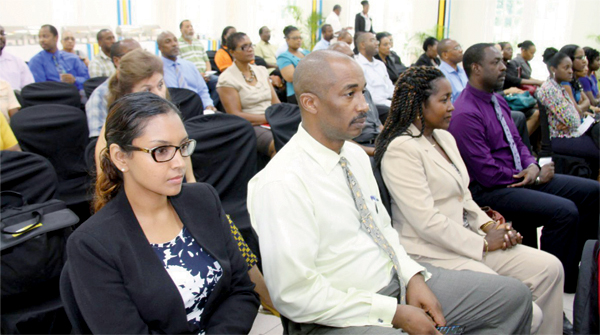
DESCRIBED as the largest project ever negotiated by the Government of Saint Lucia with the World Bank, the Disaster Vulnerability Reduction Project (DVRP), was launched on Tuesday at Spinners, Union.
The DVRP is expected to positively impact every resident of the country. Projects will include land stabilization, enhancement of water storage facilities, fortification of bridges and construction of drains islandwide.
On the heels of Hurricane Tomas in October 2010, and the unforeseen “Christmas Eve trough” of December 2013, the disaster risk reduction project is regarded as timely, specifically by pundits who monitor climate change and its impacts.
World Bank representative at the launch, AllesandroLegrottaglie, says the significance of this major investment is in keeping with the World Bank’s initiatives to ensure that Small Island Developing States like Saint Lucia do the best they can to safeguard livelihoods by implementing practical projects designed to withstand severe and unpredictable weather events.
“Climate related events” Legrottaglie, remarked, “threatens the social and economic development of societies, destroys infrastructure, and disrupts even the most basic services.”

But that’s not all. Government finances are negatively impacted given that monies for development must of necessity be pumped into rehabilitation and reconstruction of major infrastructure.
That is why, the World Bank official says, the new thrust for the international financial organisation has been on providing support for building capacity to minimize the impact of natural disasters rather than offering support after natural catastrophes.
Noting the inextricable link between national planning and disaster risk management, Prime Minister, Dr. Kenny Anthony advocates the need to mainstream disaster risk into the planning process.
“The analytical work associated with the national planning process,” the prime minister observed, “should integrate measures aimed at reducing vulnerability across all spheres of the economy. Put simply, we need to treat risk as a natural element of the development process.”
Government must also review the design of infrastructure to ensure greater resilience given that the intensity of natural hazards seems to be increasing.
The DVRP is part of a regional risk reduction initiative.




![Ministry of Equity staffers prepare hamper baskets for delivery [Photo credit : GOSL]](https://thevoiceslu.com/wp-content/uploads/2026/01/Annual-Christmas-Hamper-Initiative-feat-380x250.jpg)









